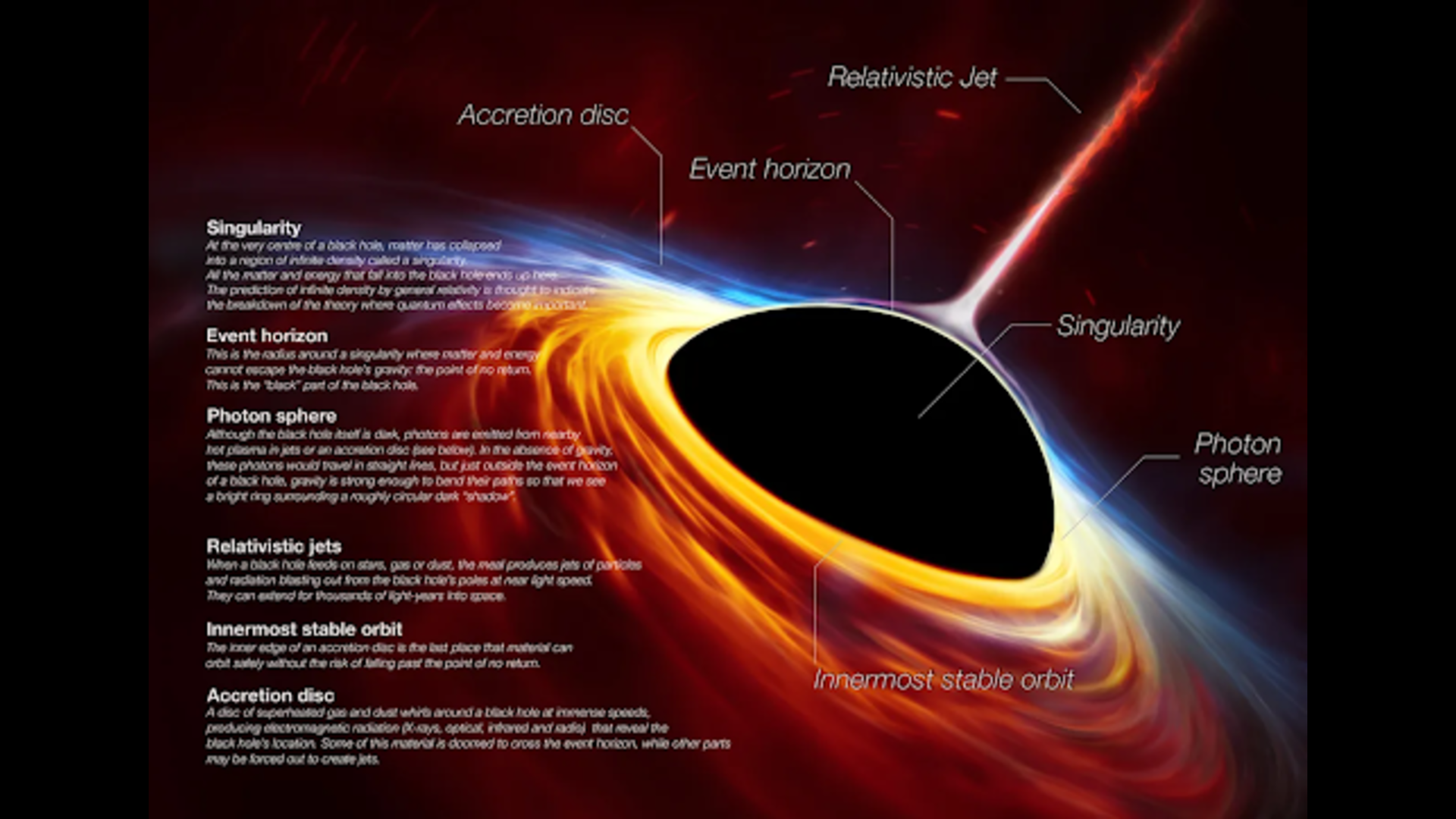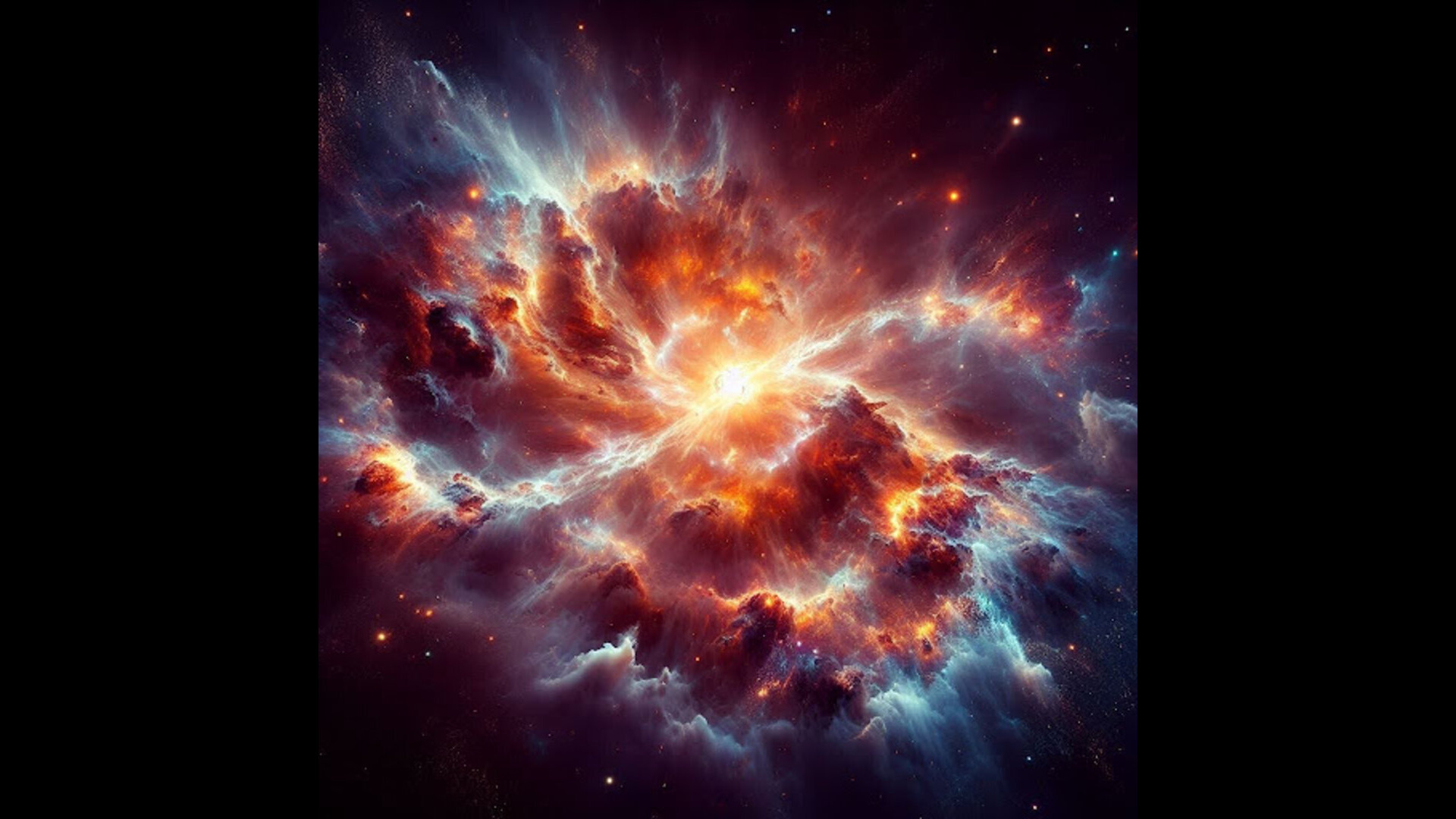Black holes, those enigmatic characters in the cosmic drama, have captivated human imagination for centuries. In this article, we delve into their formation, appearance, and the role they play in the universe.
A black hole, a celestial body so dense that even light cannot escape its gravitational pull, is a point of no return. It’s a cosmic wonder that challenges our understanding of the universe.
Image Credit: This stunning image was created by a talented designer at Microsoft.
Formation and Evolution of Blackholes
Image Credit: Microsoft designer
It all begins with the formation of giant stars born from the gravitational collapse and subsequent fusion reactions in their cores. When these stars burn through their nuclear fuel, the energy they release counteracts the inward pull of gravity. Thus, these massive stars end when they exhaust their nuclear fuel and form a black hole.
Here are the detailed steps that are involved in the formation of a black hole:
- Gravitational Collapse: The eventual gravitational collapse occurs when massive stars end their life cycle due to nuclear fuel depletion and cannot withstand gravitational collapse. The end of nuclear fusion processes or the formation of an iron core are two events that can cause the star’s core to collapse quickly.
- Supernova Explosion: The collapsing core triggers a supernova explosion, expelling the star’s outer layers into space. The core’s collapse can be halted by neutron degeneracy pressure, leading to the formation of a neutron star, or it can continue collapsing if the mass is sufficient.
- Neutron Star Collapse: If the remnant core after the supernova is above the critical Tolman-Oppenheimer-Volkoff limit (approximately 2-3 times the mass of the Sun), not even neutron degeneracy pressure can prevent further collapse.
- Singularity Formation: When the core collapses beyond the neutron star stage, the gravitational forces become so strong that they overcome all known natural forces. The matter collapses into an infinitely dense point called a singularity.
- Black Hole Formation: This gravitational collapse leads to the formation of a black hole. Matter is infinitely compressed within the region, creating a strong gravitational pull that not even light can escape.
Appearance of Black Holes

Artist’s rendering of a supermassive black hole with a rapidly spinning accretion disc, labeled to illustrate the anatomy of the object.
Image credit: European Southern Observatory
Let’s discuss the anatomy of the black hole:
- Event Horizon: Picture the event horizon as the boundary of a black hole, beyond which nothing, not even light, can escape. Once something crosses this boundary, it’s trapped forever by the black hole’s immense gravity. That is why black holes appear completely black—they don’t emit any light, and whatever happens inside them remains hidden.
- Accretion discs are the light source for black holes. They form when gas, dust, and other matter swirl around the black hole, creating a bright, hot, spinning disk.
- Photon Sphere: It’s a region where the light is forced to move in stable orbits before being drawn inside the black hole.
- Relativistic Jet: A relativistic jet refers to highly energetic and fast-moving streams of matter ejected from the regions around black holes. These jets are observed in astronomical phenomena such as active galactic nuclei (AGN), quasars, and microquasars.
- Innermost stable orbit: The innermost stable orbit of a black hole is the closest distance where something can orbit without being pulled in. This orbit is six times the black hole’s radius for a non-spinning black hole. For a spinning black hole, it ranges from 1 to 9 times the black hole’s radius, depending on how fast it’s spinning and the orbit direction.
- Singularity: The singularity is the core of the black hole where matter is thought to be infinitely dense, and the gravitational field is infinitely strong.
Summary
Black holes are windows into the universe’s most profound mysteries, from their primordial origins to the supermassive giants at the centre of galaxies. By investigating their origins and appearance, we have learned much about black holes.
Black holes continue to be lights of discovery, leading us to new areas of knowledge and comprehension as we explore further.
Intrigued by black holes? Discover the different types of black holes in this post.
If you enjoyed reading this article, you will love our newsletter. Sign up for our free newsletter!
You can also show us your support by purchasing merchandise at our Shop.





1 comment
[…] Black Holes: How they form and what do they appear like […]